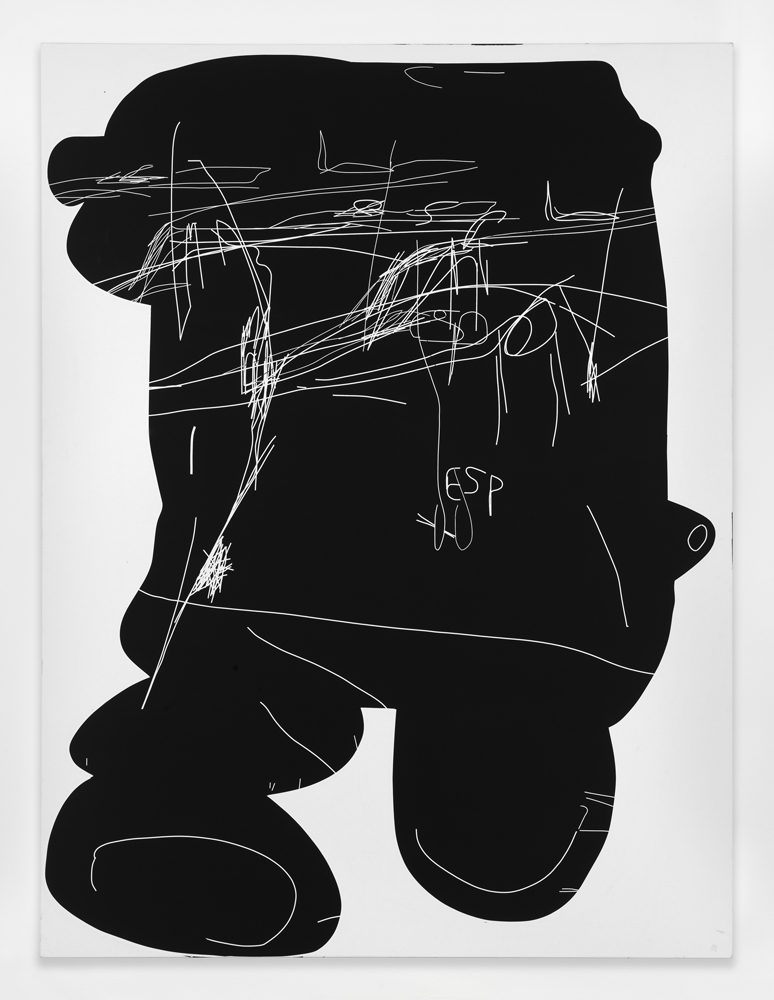Jeff Elrod
For me, it’s a very natural way to draw. The space is a screen instead of a window. Jeff Elrod
There is no foreground or background. The hypersmooth surfaces resist any impressionistic sanctuary. The fast, sinuous marks that cut across the color are not weighted with the fragility of the human hand. But the marks are familiar, at least for anyone who has spent time in front of a graphics software program, and they are made by hand.
The 47-year-old artist, Jeff Elrod, who splits his time between Marfa, Texas, and New York, refined his approach to abstraction in the late ’90s, taking the Warholian or Christopher Woolian tactic of rerouting the painter’s touch with more industrial tools one step further: Elrod favors the mouse, using his hand to create a series of smooth, vector-based, free-style design motifs—the backgrounds of Illustrator- and Photoshop-mimicking modernist color-field paintings. In the early days, Elrod would station a camera behind his shoulder, and as he scrawled dozens of designs on the screen, he’d take pictures that he’d turn into slides, select, and project onto a canvas. He’d mark off the white computer lines with masking tape before applying his all-over palates of acrylic or spray-paint. “I use automatic drawing as a device to make images with,” he explains. “But I’m a formalist painter. It’s always about the form, the composition. My task is to get the painting off the screen and onto the canvas.”
Elrod’s technique has modified in the past decade as the tricks of Photoshop have evolved—color gradients, spray effects, and even the option of scanning a potential background scrap that he has found in his studio all now crop up in his large-scale works, compounding the complexity of transferring the image onto the canvas in his Sunset Park studio. Nevertheless, Elrod’s mediation still happens with his use of the mouse between him and the machine. “I’m very comfortable with the screen,” he says. “For me, it’s a very natural way to draw. The space is a screen instead of a window.”
Another closely related series that Elrod has been working on is the appropriation of some looping line drawings he created in the early ’90s, inspired by the feverish, hallucinatory transmissions of Brion Gysin’s “Dreamachine” (1961). Scanning these earlier drawings into his computer, Elrod blurred the lines and shifted the color in Photoshop and had the resultant soft-focus images professionally printed. Now he’s using those blurred pieces as fodder for new mouse drawings—in effect, allowing the digital file of his previous experiments as fresh backgrounds, or “cannibalizing past works” as he puts it, for hybridized, multilayered, self-reflexive paintings.
When Elrod first began showing in New York in 2000, he was perceived cautiously as a curious talent. In the past year, the art world seems to have caught on to his prognostic experimentation. That might have to do with our increasing comfort with the screen and our changing relationship with digital intermediaries. But still, to see an Elrod up close is not to see an inferior rendition of a Photoshop file. It is to witness the points at which the human hand tirelessly works the surface to leave a clean trace. Ultimately, Elrod’s paintings may be the least convertible artworks for a web browser.
To return to The New Abstract, click here.







